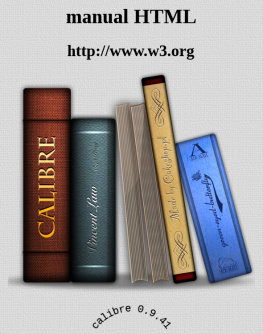Proposed System of Auxiliary (Diacritic) Markers to Aid Children and Adult Learners in Mastering Cherokee Script:
Preliminary Remarks:
I would eventually like to present this paper at the Oklahoma Native Language Association's annual conference in Preston, Oklahoma. As it turns out, I won't be able to attend this year (1999), but perhaps I'll be able to get out there next year. In the meantime, I thought I'd post it here in order to get some preliminary feedback. It's been up since May 1999, and I've already gotten some very useful feedback from Dr. Margaret Bender of the University of Oklahoma for which I thank her. Her comments have resulted in a few minor (mostly cosmetic) changes as of September 1999 and may result in additional changes later on. If anyone has additional feedback, I'd appreciate their contacting me via e-mail by clicking on my name at the bottom of this document or right here: In transcribing the Cherokee-language examples, I have used the Romanization system that is most commonly used in Cherokee documents such as books and webpages, among them the well known textbook Beginning Cherokee by Ruth Bradley Holmes and Betty Sharp Smith. According to this system, the vowels A, E, I, O, and U are sounded as in Latin and Spanish (and in German long vowels), while V stands for a nasalized schwa, rhyming with the French masculine definite article "un" or, approximately, with the vowel sound in English "huh" and "the". Long vowels are marked with the addition of a colon to the vowel. The consonants are pronounced pretty much as in English with a few exceptions which I will go into in some detail at various points in the paper.Just a quick word about fonts: I'm using two different font sets here. The first one was created by Michael Everson in Ireland. It's a beautiful font, and I'm grateful to him for having granted me permission to make use of it in my webpages. It is called Everson Mono and contains lines of equal thickness throughout with no embellishments which gives it a modern stream-lined look. I use that style in the text itself. For the examples, though, I use a larger and more elaborate wood-cut font which you may be familiar with if you've looked through Holmes and Smith's Beginning Cherokee . If you would like your own set of either of these fonts in the form of .GIFs as they are used on my pages, click on the appropriate link to download the corresponding zip file: Everson Mono - 56k Woodcut - 92k (includes diacritic markers)
Paper:
When first learning to read Cherokee, one is faced with a few minor problems resulting from certain ambiguities inherent in Cherokee script. These ambiguities are slight in comparison to the myriad inconsistancies of English orthography, and I am confident that they don't present literate Cherokee speakers with much of a problem at all. Beginners, on the other hand, often feel forced to rely too much on the Romanized version which, of course, can inhibit these students' confidence in their ability to read the syllabary, sometimes even in the long term. As a student of the Cherokee language, I have experienced this problem firsthand. And I think I have a solution.Cherokee script could very easily be rendered completely phonetic with the introduction of a handful of diacritic markings similar to those found in Arabic, Greek, Hebrew, and other writing systems. Such a system would be designed to be compatible with the existing syllabary. In other words, it would require no spelling reform nor changes of any type. Placed above and below any overly ambiguous character, these signs would render the script completely .The purpose of this paper is to present my proposal for such a system. To this end, it will be necessary to separate this ambiguity into five types, these being voicing/aspiration, vowel length, nasality, intrusive 'h'/glottal stop, and pitch/accent. I will treat each in a separate section below.
- Voicing/Aspiration: The difference in pronunciation between the English words 'pear' and 'bear', considered by most people to be one of voicing, can be attributed as much to aspiration, I believe. Of course, there are minimal pairs like 'breech'/'preach' in which aspiration is said to play no role. Nevertheless, I tend to think of voicing and aspiration as auxiliary components of one and the same distinction, at least in English. I am told, however, that the difference in Cherokee is really more of aspiration than of voicing. In order to reduce potential confusion to those unfamiliar with the difference, however, I have decided to use both terms synonymosly in this paper. If you feel lost, all I mean by this is that when I'm contrasting similar sound pairs like 'd'/'t' and 'b'/'p' and 'g'/'k', I'm going to refer to the left element as 'voiced/unaspirated' and the right element as 'voiceless/aspirated'. If you still don't get it, don't worry. I'll explain in simpler terms in specific cases as they arise below.
Consider the sequence of characters 
 which, depending on the pronunciation of the first consonant, can mean either "winter" (GO-LA) or "bone" (KO-LA). Sequoyah was obviously aware of this distinction because he created separate symbols for five such pairs, these being
which, depending on the pronunciation of the first consonant, can mean either "winter" (GO-LA) or "bone" (KO-LA). Sequoyah was obviously aware of this distinction because he created separate symbols for five such pairs, these being  (GA) and
(GA) and  (KA),
(KA),  (DA) and
(DA) and  (TA),
(TA),  (DE) and
(DE) and  (TE),
(TE),  (DI) and
(DI) and  (TI), and
(TI), and  (DLA) and
(DLA) and  (TLA). I presume he would have created distinctions for all the two or three dozen pairs that occur in Cherokee (depending on dialect and, perhaps, other factors) except that this would have made the already somewhat cumbersome 85-character set too large for practical usage. Instead, he presumably chose to include only the most commonly occuring ones.
(TLA). I presume he would have created distinctions for all the two or three dozen pairs that occur in Cherokee (depending on dialect and, perhaps, other factors) except that this would have made the already somewhat cumbersome 85-character set too large for practical usage. Instead, he presumably chose to include only the most commonly occuring ones.
To those who know Cherokee well, it is clear whether the meaning 'bone' or 'winter' is intended, I'm sure. But what about those of us who are new to both the script and the language? Even if we can guess at the meaning through context, how will we ever learn the correct pronunciation? Clearly the answer is not to create more characters. Particularly nowadays when there are so many people who are used to the system the way it is and with numerous books and articles in print which already use the existing system.
Instead, I propose that, in cases like that of KO-LA/GO-LA above where there are potential problems resulting from ambiguity in terms of either pronunciation or meaning, a sign be placed above the character in question, explicitly marking it as voiced/unaspirated or voiceless/aspirated. I further propose that this sign be derived from the horizontal line and downward hook appearing at the top of the Cherokee character  (TI) which is what differentiates that character from its voiced/unaspirated equivalent,
(TI) which is what differentiates that character from its voiced/unaspirated equivalent,  (DI). Note also that the same stroke is found in the voiceless/aspirated syllable
(DI). Note also that the same stroke is found in the voiceless/aspirated syllable 














 which, depending on the pronunciation of the first consonant, can mean either "winter" (GO-LA) or "bone" (KO-LA). Sequoyah was obviously aware of this distinction because he created separate symbols for five such pairs, these being
which, depending on the pronunciation of the first consonant, can mean either "winter" (GO-LA) or "bone" (KO-LA). Sequoyah was obviously aware of this distinction because he created separate symbols for five such pairs, these being  (GA) and
(GA) and  (KA),
(KA),  (DA) and
(DA) and  (TA),
(TA),  (DE) and
(DE) and  (TE),
(TE),  (DI) and
(DI) and  (TI), and
(TI), and  (DLA) and
(DLA) and  (TLA). I presume he would have created distinctions for all the two or three dozen pairs that occur in Cherokee (depending on dialect and, perhaps, other factors) except that this would have made the already somewhat cumbersome 85-character set too large for practical usage. Instead, he presumably chose to include only the most commonly occuring ones.
(TLA). I presume he would have created distinctions for all the two or three dozen pairs that occur in Cherokee (depending on dialect and, perhaps, other factors) except that this would have made the already somewhat cumbersome 85-character set too large for practical usage. Instead, he presumably chose to include only the most commonly occuring ones.